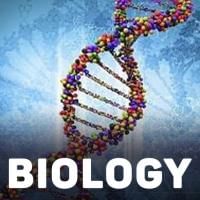NEET Exam > NEET Questions > Movement in paramoecium is due to ______a)gul...
Start Learning for Free
Movement in paramoecium is due to ______
- a)gullet
- b)photo-receptors
- c)cillia
- d)radiating canals
Correct answer is option 'C'. Can you explain this answer?
Most Upvoted Answer
Movement in paramoecium is due to ______a)gulletb)photo-receptorsc)cil...
Movement in paramecium is due to hair like structures called cilia that grows on its body. Paramoecium can move actively due to the presence of thousands of cilia. Cilia performs rhythmic movement in order to steer food containing water into the gullet.
Free Test
FREE
| Start Free Test |
Community Answer
Movement in paramoecium is due to ______a)gulletb)photo-receptorsc)cil...
Movement in Paramoecium
Paramoecium is a unicellular organism that belongs to the group of ciliates. It possesses numerous hair-like structures called cilia, which play a vital role in its movement. The movement of Paramoecium is essential for various biological processes, including locomotion, feeding, and reproduction. Let's explore the factors that contribute to the movement of Paramoecium.
Cilia
Cilia are short, hair-like projections that cover the entire surface of Paramoecium. These cilia are arranged in longitudinal rows, creating a coordinated beating pattern. The synchronized movement of cilia propels the organism in a specific direction.
Structure of Cilia
Each cilium is composed of a cylindrical structure called axoneme, which contains a bundle of microtubules. These microtubules are made up of proteins called tubulin. The arrangement of microtubules within the axoneme is known as the "9+2" pattern. It consists of nine peripheral doublet microtubules surrounding two central singlet microtubules.
Sliding Filament Mechanism
The movement of Paramoecium is primarily driven by the sliding filament mechanism. In this mechanism, the dynein arms present on the peripheral doublet microtubules interact with adjacent doublets. These dynein arms use ATP (adenosine triphosphate) energy to create a sliding motion between the doublet microtubules. As a result, the cilia bend and move in a coordinated manner, propelling the Paramoecium forward.
Directional Movement
The cilia of Paramoecium beat in a coordinated manner, creating a forward motion. The direction of movement is determined by the orientation of the cilia. The cilia beat in a tilted or oblique fashion, resulting in a net forward movement. The beating of cilia is controlled by a complex network of microtubules and proteins within the organism.
Other Factors
Apart from cilia, other factors also contribute to the movement of Paramoecium. These include:
- Gullet: The gullet is a specialized structure in Paramoecium that helps in ingesting food particles. While the gullet does not directly contribute to movement, it plays a role in obtaining nutrients necessary for energy production, which indirectly supports movement.
- Photoreceptors: Paramoecium does not possess photoreceptors. Photoreceptors are sensory structures that detect light and play a role in phototaxis, where organisms move towards or away from light.
- Radiating Canals: Paramoecium does not have radiating canals. Radiating canals are found in organisms like jellyfish and play a role in their movement and locomotion.
Therefore, the correct answer is option C) cilia. The synchronized beating of cilia through the sliding filament mechanism is responsible for the movement of Paramoecium.
Paramoecium is a unicellular organism that belongs to the group of ciliates. It possesses numerous hair-like structures called cilia, which play a vital role in its movement. The movement of Paramoecium is essential for various biological processes, including locomotion, feeding, and reproduction. Let's explore the factors that contribute to the movement of Paramoecium.
Cilia
Cilia are short, hair-like projections that cover the entire surface of Paramoecium. These cilia are arranged in longitudinal rows, creating a coordinated beating pattern. The synchronized movement of cilia propels the organism in a specific direction.
Structure of Cilia
Each cilium is composed of a cylindrical structure called axoneme, which contains a bundle of microtubules. These microtubules are made up of proteins called tubulin. The arrangement of microtubules within the axoneme is known as the "9+2" pattern. It consists of nine peripheral doublet microtubules surrounding two central singlet microtubules.
Sliding Filament Mechanism
The movement of Paramoecium is primarily driven by the sliding filament mechanism. In this mechanism, the dynein arms present on the peripheral doublet microtubules interact with adjacent doublets. These dynein arms use ATP (adenosine triphosphate) energy to create a sliding motion between the doublet microtubules. As a result, the cilia bend and move in a coordinated manner, propelling the Paramoecium forward.
Directional Movement
The cilia of Paramoecium beat in a coordinated manner, creating a forward motion. The direction of movement is determined by the orientation of the cilia. The cilia beat in a tilted or oblique fashion, resulting in a net forward movement. The beating of cilia is controlled by a complex network of microtubules and proteins within the organism.
Other Factors
Apart from cilia, other factors also contribute to the movement of Paramoecium. These include:
- Gullet: The gullet is a specialized structure in Paramoecium that helps in ingesting food particles. While the gullet does not directly contribute to movement, it plays a role in obtaining nutrients necessary for energy production, which indirectly supports movement.
- Photoreceptors: Paramoecium does not possess photoreceptors. Photoreceptors are sensory structures that detect light and play a role in phototaxis, where organisms move towards or away from light.
- Radiating Canals: Paramoecium does not have radiating canals. Radiating canals are found in organisms like jellyfish and play a role in their movement and locomotion.
Therefore, the correct answer is option C) cilia. The synchronized beating of cilia through the sliding filament mechanism is responsible for the movement of Paramoecium.

|
Explore Courses for NEET exam
|

|
Similar NEET Doubts
Movement in paramoecium is due to ______a)gulletb)photo-receptorsc)cilliad)radiating canalsCorrect answer is option 'C'. Can you explain this answer?
Question Description
Movement in paramoecium is due to ______a)gulletb)photo-receptorsc)cilliad)radiating canalsCorrect answer is option 'C'. Can you explain this answer? for NEET 2025 is part of NEET preparation. The Question and answers have been prepared according to the NEET exam syllabus. Information about Movement in paramoecium is due to ______a)gulletb)photo-receptorsc)cilliad)radiating canalsCorrect answer is option 'C'. Can you explain this answer? covers all topics & solutions for NEET 2025 Exam. Find important definitions, questions, meanings, examples, exercises and tests below for Movement in paramoecium is due to ______a)gulletb)photo-receptorsc)cilliad)radiating canalsCorrect answer is option 'C'. Can you explain this answer?.
Movement in paramoecium is due to ______a)gulletb)photo-receptorsc)cilliad)radiating canalsCorrect answer is option 'C'. Can you explain this answer? for NEET 2025 is part of NEET preparation. The Question and answers have been prepared according to the NEET exam syllabus. Information about Movement in paramoecium is due to ______a)gulletb)photo-receptorsc)cilliad)radiating canalsCorrect answer is option 'C'. Can you explain this answer? covers all topics & solutions for NEET 2025 Exam. Find important definitions, questions, meanings, examples, exercises and tests below for Movement in paramoecium is due to ______a)gulletb)photo-receptorsc)cilliad)radiating canalsCorrect answer is option 'C'. Can you explain this answer?.
Solutions for Movement in paramoecium is due to ______a)gulletb)photo-receptorsc)cilliad)radiating canalsCorrect answer is option 'C'. Can you explain this answer? in English & in Hindi are available as part of our courses for NEET.
Download more important topics, notes, lectures and mock test series for NEET Exam by signing up for free.
Here you can find the meaning of Movement in paramoecium is due to ______a)gulletb)photo-receptorsc)cilliad)radiating canalsCorrect answer is option 'C'. Can you explain this answer? defined & explained in the simplest way possible. Besides giving the explanation of
Movement in paramoecium is due to ______a)gulletb)photo-receptorsc)cilliad)radiating canalsCorrect answer is option 'C'. Can you explain this answer?, a detailed solution for Movement in paramoecium is due to ______a)gulletb)photo-receptorsc)cilliad)radiating canalsCorrect answer is option 'C'. Can you explain this answer? has been provided alongside types of Movement in paramoecium is due to ______a)gulletb)photo-receptorsc)cilliad)radiating canalsCorrect answer is option 'C'. Can you explain this answer? theory, EduRev gives you an
ample number of questions to practice Movement in paramoecium is due to ______a)gulletb)photo-receptorsc)cilliad)radiating canalsCorrect answer is option 'C'. Can you explain this answer? tests, examples and also practice NEET tests.

|
Explore Courses for NEET exam
|

|
Signup for Free!
Signup to see your scores go up within 7 days! Learn & Practice with 1000+ FREE Notes, Videos & Tests.


























